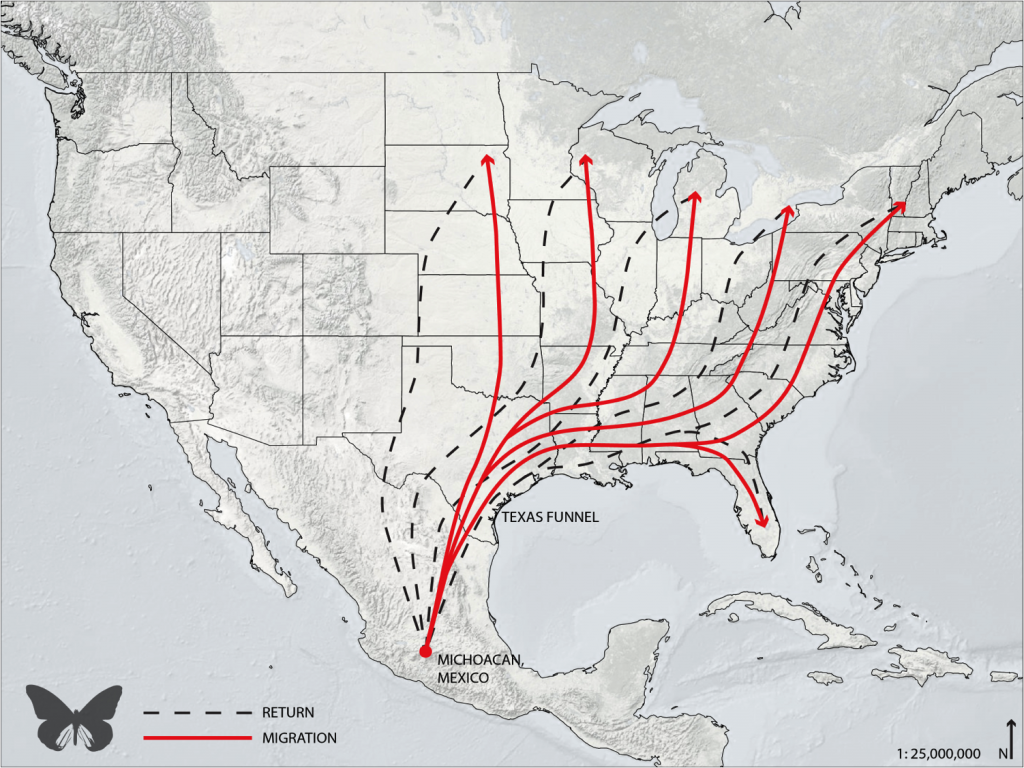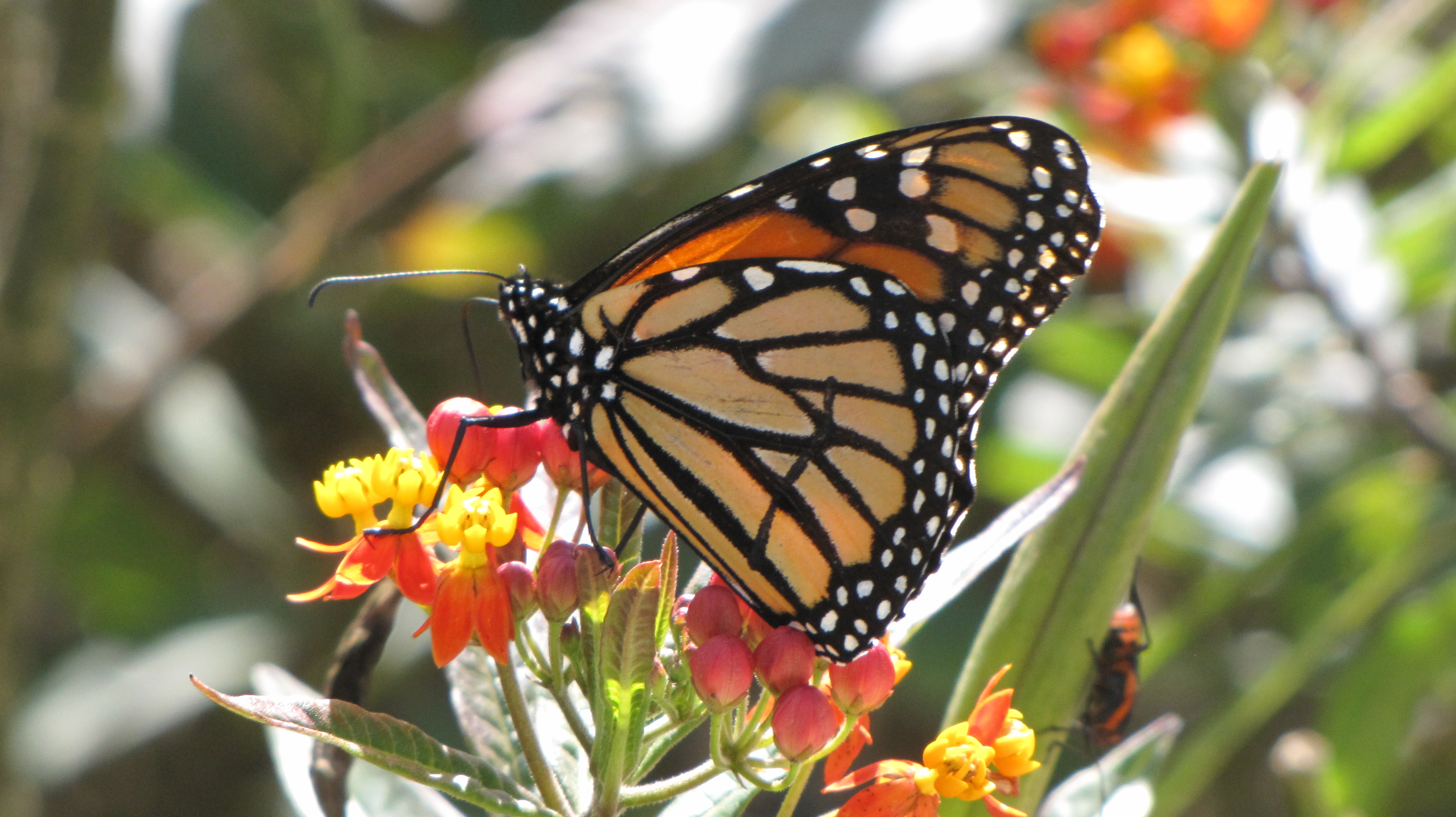Good news from the Monarch butterfly roosting sites in the mountains of Michoacan this week: for the first time since the creation of the Monarch Butterfly Biosphere Preserve in 2000, officials declared that illegal logging there has practically been eliminated.

Illegal logging in Mexico has practically been eliminated, says the World Wildlife Fund, Mexico
Mexican government officials and the World Wildlife Fund, Mexico, made the announcement after a review of aerial photographs of the Oyamel forests in Michoacan province this week revealed no detectable loss of forest to logging. Approximately 50 acres fell victim to drought, erosion and disease.
“The battle is not yet won,” Omar Vidal of the environmental group WWF Mexico, told the Associated Press in a widely circulated report.
Unfortunately the good news in Mexico was tempered with the harsh reality that 2012 will be tough for the Monarch butterfly migration this fall. A year “like no other,” according to Dr. Chip Taylor, founder of Monarch Watch–and a year that includes climate change, drought, wildfires, and now massive aerial insecticides in the strategic North Texas migration flyway.

Monarchs must pass through Texas coming and going to Mexico.
The year started with a wet spring that arrived strong and early, creating a timing snafu here in the “Texas funnel.” The Lone Star State is always the first stop on the multi-generation Monarch migration spring tour. A sound launch here in April, based on mild temperatures and fresh, ample milkweed host plant, sets up a successful first generation of Monarch butterflies to lay eggs, hatch caterpillars and chrysalises, and carry the torch northward.
But that didn’t happen this year. The Texas spring came on hot, early, and accompanied by strong winds. When Monarchs arrived in March, a lot of wild milkweed wasn’t even out of the ground yet. The wet, mild winter provoked a bountiful wildflower showing, creating serious competition from more aggressive species.
Then we had a slew of 80- and 90-degree days that sped up growth of both the caterpillars and plants. Readers of this blog contacted us with tales of a serious milkweed shortage. “Plants grew rapidly this spring with many species blooming 10-30 days earlier than normal,” wrote Taylor in his annual Monarch Population Status blogpost, published July 30. “Plants that typically flower in the fall began blooming in June and reports continue of water stressed plants blooming early.”

Milkweed shortages dogged Monarch butterflies this year.
That’s a problem because Monarch caterpillars prefer young, healthy plants rather than those that are over-the-hill and “senescing,” as scientists call it. Studies of caterpillars reared on older, mature milkweed suggest less healthy butterflies, and problems like the OE virus and tachinid flies are more common.
Summer brought extreme heat and no rain, with the historic drought suffered in Texas last year now expanding to the Midwest–not good for butterflies and devastating for host and nectar plants.
Successive generations of Monarchs seem to having a tough time syncing their schedules with the new climate calendar and plants seem confused, too.
It will be an interesting migration. We generally start to see the vanguard of migrating Monarchs in late August here in Texas. By Labor Day, a dribble of early arrivals grace our goldenrod at the ranch.
On the way, they will have seen a torched landscape from wildfires in the Midwest and Oklahoma, and now, massive aerial insecticide sprays in Dallas, a response to an outbreak of West Nile virus there.
The aerial spraying of insecticides like Duet, the chemical dispersed last night over 106,00 acres of Dallas county, has not taken place since 1966. The Environmental Protection Agency and Centers for Disease Control and Prevention have said that Duet, comprised of synthetic pyrethenoids, are safe and pose no health risk to humans or pets. Descriptions of the chemical provided by Clarke Corporation say the chemical is even safe for bees.
Scientists and citizens expressed reservations about aerial spraying. The Dallas-area town of Lancaster even voted to not participate in the program.
Dr. John Abbott, Curator of the Entomology Collection at the University of Texas at Austin, questioned the effectiveness of such a measure. “All this will do is knock out the adults that are flying, but it doesn’t do anything about the eggs and larvae,” he said.
“Aerial spraying will kill some, but not all adult mosquitoes, but it won’t solve the problem since the spraying will not impact the breeding sites,” said Dr. Taylor via email. “Why aren’t they attacking the breeding sites?”
Dr. Mike Merchant, Professor and Extension Urban Entomologist at the Texas AgriLife Extension Service in Dallas, dismissed concerns of Duet effecting the Monarch migration. “I wouldn’t anticipate that Duet would have much impact on Monarch migrations or survival, ” he said via email. “The insecticide lasts for just a few hours before degradation or evaporation.” Merchant added that since spraying is done at night, butterflies would be less likely to encounter it and that studies suggest these insecticides are less toxic to larger insects.
“That said, we are taking a wait and see approach,” he wrote.
And that’s what we will do, as we await the first arrivals of this year’s Monarch migration.
Like what you’re reading? Follow butterfly and native plant news at the Texas Butterfly Ranch. Sign up for email delivery in the righthand navigation bar of this page, like us on Facebook, or follow us on Twitter, @monikam. You can also read our stuff on the Rivard Report.
Good News!
We’ve had tons of caterpillars and chrysalises this year (more than I’ve ever seen before) We also seen a lot of newly emerged Monarchs. So we’re doing our part. All we can do is hope that they make it through migration.
As usual with anything, there is the good news out of Mexico with the bad news (saving??? lives) by killing everything that happens to fly into the spray. I agree that the breeding ground areas should be the focus..not wholesale spraying of everything. We thought DDT was great until we realized the damage that it did. I am not an alarmist but wish we humans could temper our reactions to things. Use insect repellent on your arms if you go out side so I do not have to breath the spray.
If 160,000 acres are aerially sprayed in Dallas that = 250 square miles = tiny, dot like area in relation to the many 10,000’s of square miles through which the monarch migration passes in central and west Texas. So the spraying of Dallas is not a great threat to the monarch migration.
However, spraying could be a significant threat if it ever occurred in the small and medium sized cities and towns of west Texas because that’s where many millions of monarchs cluster in pecan and other shade trees during the migration in October.
[…] milkweed diet makes the monarchs poisonous to most birds or, at least, bad-tasting. The biggest threats to the monarch’s existence are climate change and illegal logging in Mexico, although recent reports from the World Wildlife […]
I brought a chrysalis inside that I found on a wild milkweed. It emerged last night and it has been sitting on the same flower ever since. Should I bring it back inside because it’s cool out or is it possible that it has something wrong with her?